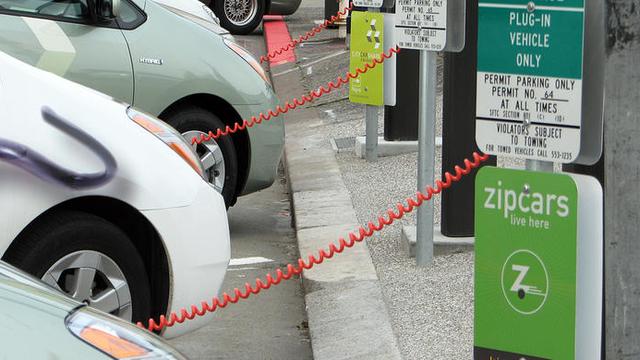Statewide trends indicate enormous growth potential in the market share for electric vehicles (EVs) in the next decade. A Master of Public Policy student at the Humphrey School of Public Affairs is helping one Minnesota city begin mapping its own electric future.
St. Anthony Village, a city of about 8,500 that straddles Hennepin and Ramsey counties in the Twin Cities metro area, wants to explore how to serve residents and visitors who use electric vehicles. Public Works Director Jay Hartman says larger communities near St. Anthony Village have already begun that process.
“But our small size poses challenges when trying to find resources and staff time to explore this topic on our own,” he says. That’s why the city turned to the University of Minnesota’s Resilient Communities Project (RCP) and student researcher Kimberly Napoline (MPP '20) for help.
The number of St. Anthony residents who have purchased EVs continues to rise, Hartman says, and city hall staff receive more frequent inquiries and requests to make EV infrastructure available. The goal of Napoline’s project was to explore the feasibility of an EV–charging infrastructure network in St. Anthony using case-study research and community feedback.
To guide her research, Napoline conducted a stakeholder analysis that included meetings with St. Anthony’s city council, its Parks and Environment Commission, the Citizens for Sustainability Group, and the Minnesota EV Owners group. She then studied EV charging policies and programs of other Minnesota cities and compiled issues for St. Anthony to consider.
One key issue is the different types of charging stations. “The three main types come with their own cost and electrical capacity limitations,” she says.
Standards are also needed to ensure that EV infrastructure is developed in a consistent way; these include policies such as zoning, subdivision ordinances, and parking regulations.
“Also, if a firm or individual wants to install a charging station, it’s important for the permitting process to be transparent, consistent, and relatively simple to navigate,” Napoline says.
Based on her initial research and conversations, Napoline recommends several locations for EV charging stations in St. Anthony, including city hall, Silver Lake Village Shopping Center, and Silverwood Park.
“These sites come with particular advantages that make them perfect for an electric vehicle charging station,” she says.
“Kimberly has done an outstanding job getting this project off the ground,” Hartman says. “We now have a starting point. In her final report, she has provided direction to our staff as to the next steps we will be working on in summer of 2020 and beyond.”
RCP, housed within the Center for Urban and Regional Affairs, connects local government agencies with University students and faculty to advance community resilience and student learning. Other RCP community partners this year are Scott County, the City of Ramsey, the Minneapolis Public Housing Authority, and the League of Minnesota Cities.
Read the final report: Driving toward an Electric Future: Policy and Research for Electric Vehicles
A version of this story was originally published in the Catalyst newsletter from the Center for Transportation Studies



